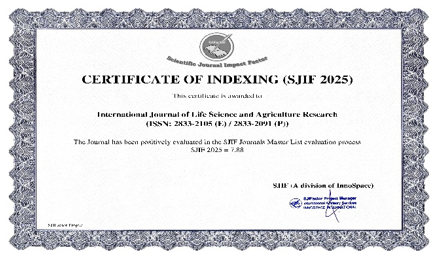Bamboo as a Local-Based Material in Interior Design at the Campus of Bamboo Agroforestry, Ngada Regency, East Nusa Tenggara Indonesia
DOI:
https://doi.org/10.55677/ijlsar/V03I7Y2024-07Keywords:
Local_Wisdom, Bamboo, Interior, Campus_of_Bamboo_Agroforestry, Ngada_RegencyAbstract
Campus of Bamboo Agroforestry is located in Turetogo Village, Ratogesa, Ngada District, East Nusa Tenggara Indonesia. The site serves as the site of Bamboo Field School, an educational initiative from Bamboo Lestari Foundation for individuals, villages, indigenous communities, including women's and youth organizations. The goal of this research is to explore the phrases "bamboo," which are based on local knowledge and are used in interior design features found in Bamboo Campus Village Tutretogo. The methodology in this research is method of qualitative description with a descriptive approach. The data in this research was collect by observation,interviews and documentation. The result of the research is Ngada community uses bamboo as one of the natural materials, based on local wisdom. Bamboo has a beneficial ecological value; a lot grows throughout the area of Flores, especially the Campus of Bamboo Agroforestry Area, so that supports the concept of building that is based on local wisdom because it has an important role as a natural building material, whose use can help reduce global warming issues. In interior design, bamboo can be applied to elements such as space-shaping elements (ceiling/roofing, walls, floor), space-complementary elements (window and door), furniture, and interior accessories/decoration. In accordance with its characteristics as a natural material, its application to the interior design element gives an impression and a cool atmosphere to the room. The appearance of the shaped design also varies according to the type of bamboo used.
References
Abimanyu, A.R., & Anggana, F.S. (2021). Study of Bamboo Architectural Concepts on the building of the Panyaden Thai School of Nature. Journal of Architecture Student, 2(1). https://doi.org/10.31101/jas.v2i1.1190.
Agung S., & Gregorius. (2013). Development of Bamboo Materials in Design Components Shape Structures of Modern Architectural Buildings. Presented at the National Seminar.
Bamboo Lestari Foundation. (2021). Program 1000 Village Bambu: People's Bambu Industry Movement. Environmental Bamboo Faundation
Chairul, A. (2019). Lokal Wisdom in Mancoliak Anak Tradition of Silungkang’s Indigenous People. Historical and Cultural Research Journal, 5(2)
Devi, N.M.E.N., Pranajaya, I.K., Rahayu, NN.S., Mahadipta, NG.D., & Kumala, NP.R.P. (2023). A study of the use of bamboo as a local wisdom-based material in interior design. SENADA, 6(1), 148-155.
Dewagana, G.P., & Arif, K.A. (2022). Sustainability of Bamboo Materials in the Bamboo Earth Hall Building of Rahayu Youth. RISA: Architectural Research Journal, 6(1), https://doi.org/10.26593/risa.v6i01.5426.58-73
Halim, I.A., Larasati, H., Martianus, J., Iqbal, R.M., & Muhsin, A. (2014). The study of material usage as one of the efforts towards sustainable architecture. Reka Karsa Journal, 1(2)
Hastuti. (2014). Strengthening Local Wisdom to Reduce Global Warming. Proceedings of the Annual Scientific Meeting (PIT) of the Geographical Union of Indonesia. Yogyakarta State University
Hastuti, D. L. (2015). Bambu Composite as Material Innovation and Interior Accessory Design based on Green Design and Culture in Surakarta. Journal of Abdi Art, 6(2), 125-138.
Kusmayadi., & Endar, S. (2000). Research Methodology in the Field of Tourism. Jakarta: Gramedia Main Library. 10.24235/amwal.v9i1.1670.g1188.
Mariana, C., & Madiono, E. (2013). Management and Development of Interior Accessories Business at PT. Cahya Success Decorindo in Sidoarjo. Agora's Scientific Journal, 1(1)
Muhsin, Ardhiana, dkk., (2015). Bamboo material as construction on the Great Hall Eco Campus Outward Bound. Reka Karsa Journal, 3(3). https://doi.org/10.26760/rekakarsa.v11i3.
Mustakim, dkk., (2009). Bamboo as a sustainable and affordable material for housing. Presented at the National Seminar of the Christian University of Maranatha, Bandung.
Suriani, E. (2017). Bamboo as an Alternative to Ecological Materials Applications: Potential and Challenges.” EMARA Indonesian Journal of Architecture, 3(1). https://doi.org/10.31101/jas.v3i1.1281.
Woga, Edmund. (2009). Mission, Misiology and Evangelization of Indonesia. Yogyakarta: Kanisius
Downloads
Published
Issue
Section
License
Copyright (c) 2024 International Journal of Life Science and Agriculture Research

This work is licensed under a Creative Commons Attribution 4.0 International License.












